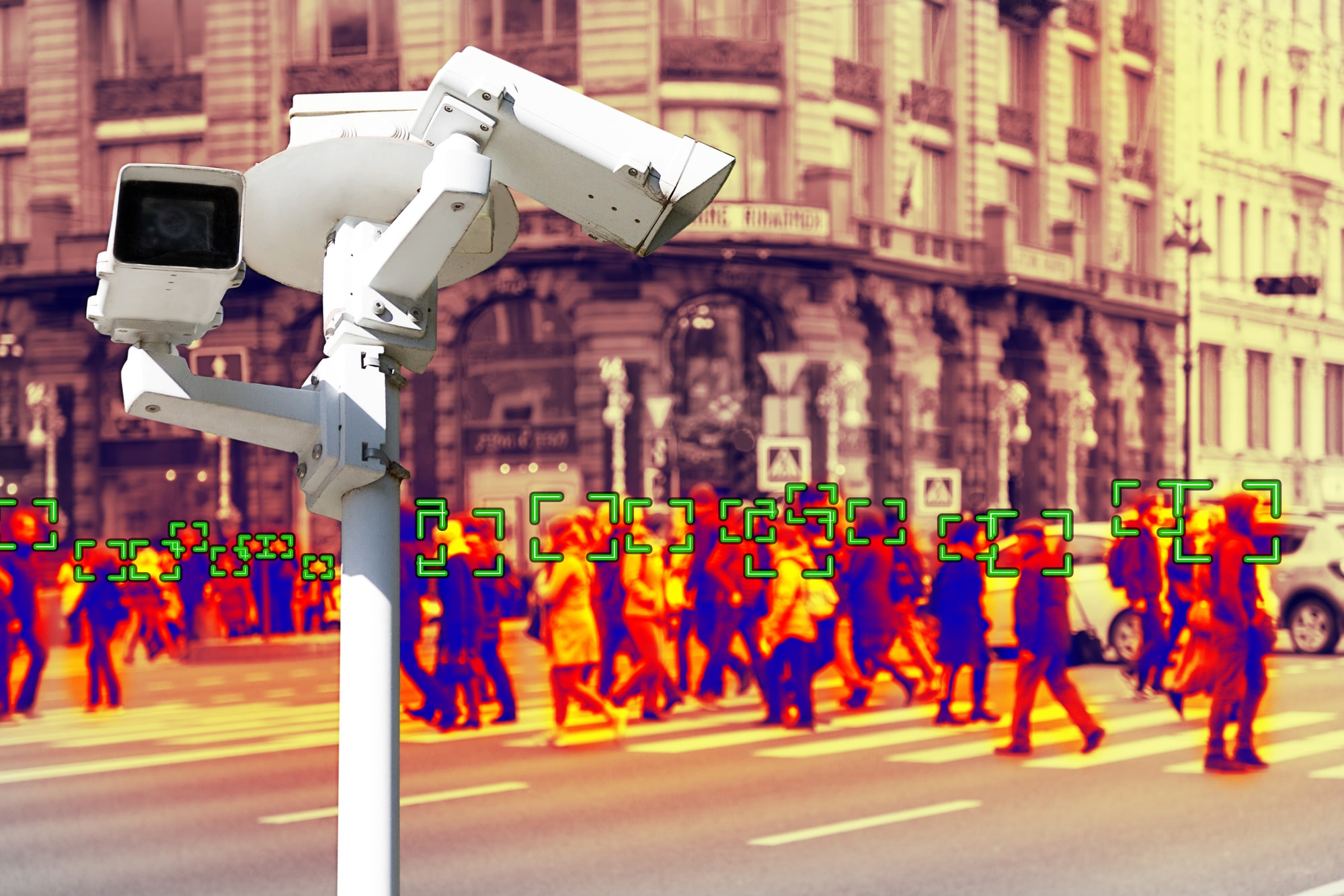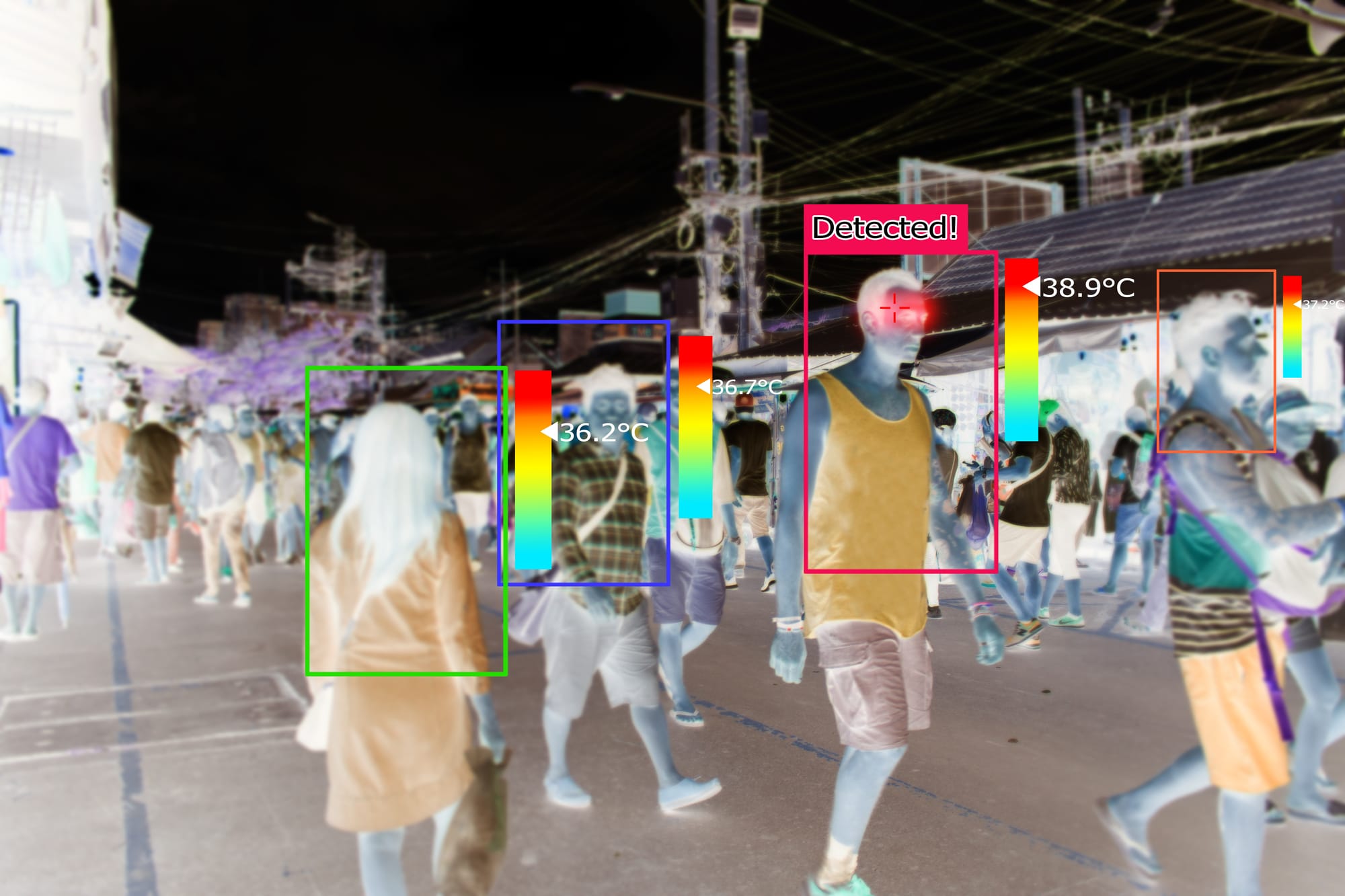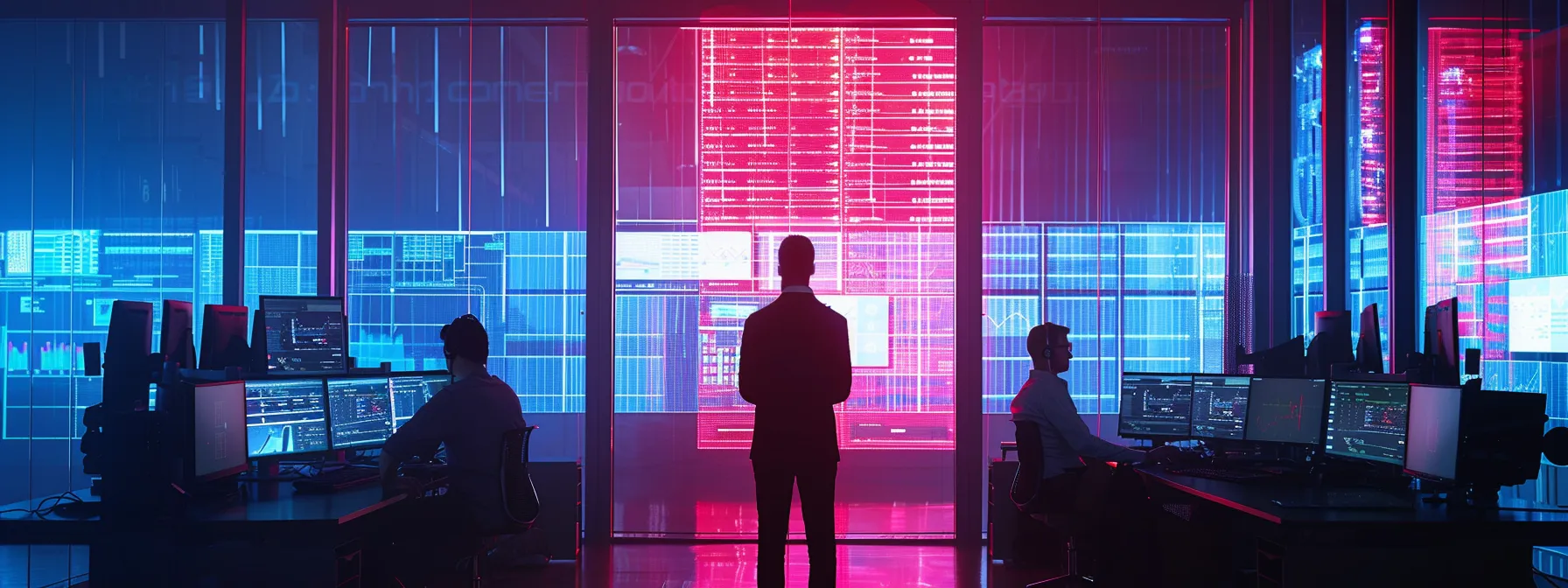
In the intricate dance of shadow and light that challenges the realm of video security, thermal imaging cameras emerge as the unsung heroes. Traditional video surveillance systems play a pivotal role in maintaining safety and security; however, their efficacy can be severely tested by the cloak of darkness and the whims of harsh weather conditions. When fog descends like a curtain, when smoke unfurls its obfuscating veil, or when the sheer black of night renders the visible spectrum inadequate, conventional cameras falter.
This is the stage where thermal imaging cameras step into the limelight. By capturing the invisible infrared radiation that all objects emit, these advanced guardians cut through visual impediments with ease. Unlike their standard counterparts, which rely on reflected light, thermal cameras see the world through the heat it emits, unveiling a realm invisible to the naked eye.
As LogicFortress presents this exploration into the world of thermal imaging cameras, we invite you to discover how these sophisticated devices are revolutionizing the security landscape. In environments where adversity is the norm, and clarity is a requisite, thermal imaging cameras stand vigilant—offering unwavering surveillance in the most challenging conditions. Join us as we unveil the layers of this transformative technology and its pivotal role in modern security strategies.
What Are Thermal Imaging Cameras?
Thermal imaging cameras are technological marvels that extend the human eye’s capabilities beyond the visible spectrum. Instead of depending on light, these cameras detect infrared radiation or heat that objects naturally emit. This allows them to construct a ‘thermal image’ that depicts temperature variations of the scene in front of them, which can be interpreted even in total darkness or through smoke, fog, and other visual obstructions.
At the core of a thermal imaging camera lies the thermal sensor, sensitive to infrared wavelengths. Coupled with specialized lenses that focus the infrared light and sophisticated software that translates heat into recognizable images, these cameras reveal a world that is hidden from standard surveillance equipment. The images produced by thermal cameras are not detailed photographs but rather heat signatures that are color-coded for easy interpretation, with warmer areas typically shown in shades of red, orange, or yellow, and cooler areas in green or blue.
The use of thermal imaging extends beyond security; it’s prevalent in various fields, such as medical diagnostics, firefighting, and even astronomy. However, in the context of security, thermal imaging proves invaluable by offering consistent and reliable surveillance regardless of the environmental conditions, ensuring that nothing goes unseen.
With a clear understanding of what thermal imaging cameras are and how they operate, it’s evident why they are becoming an indispensable tool in the arsenal of security professionals. As we delve further into their advantages, it becomes clear why thermal imaging is not just an option but a necessity for robust security in challenging conditions.
The Advantages of Thermal Imaging in Security
The deployment of thermal imaging cameras in security systems presents a multitude of advantages that conventional cameras simply cannot match. Here are some of the pivotal benefits they offer:
- All-Weather Visibility: Thermal imaging cameras excel in providing clear images regardless of environmental challenges. They can see through fog, rain, and snow, offering reliable surveillance when standard cameras would struggle.
- 24/7 Performance: While typical surveillance cameras rely on adequate lighting to capture images, thermal cameras do not need any light at all. They can detect heat signatures day or night, making them invaluable for continuous monitoring.
- Detection of Hidden Objects: Thermal cameras can reveal objects or individuals that are obscured by foliage or shadows, as they can detect the heat differences between the subject and the surrounding environment.
- Long-Range Detection: Many thermal imaging cameras can detect heat signatures at considerable distances, allowing for early detection of potential threats and giving security personnel a valuable time advantage.
- Low False Alarm Rates: Since thermal cameras are less prone to visual disturbances like moving shadows or light reflections, they tend to have fewer false alarms compared to standard video surveillance systems.
- Integration with Analytic Systems: Advanced thermal cameras can be integrated with analytic systems to identify specific heat signatures associated with humans or vehicles, enhancing the overall security response.
The inherent benefits of thermal imaging make these cameras a potent tool in a security professional’s toolkit. They not only enhance the effectiveness of surveillance systems but also provide a proactive approach to threat detection and management. With the ability to monitor and analyze situations in real-time, regardless of visibility conditions, thermal imaging cameras are indeed pivotal in securing premises against evolving threats.
Thermal Imaging Versus Traditional Cameras in Adverse Weather

When pitted against traditional surveillance cameras, thermal imaging technology showcases its superiority under the duress of adverse weather conditions. Conventional cameras depend on visible light to produce images, which can be compromised by environmental factors such as rain, fog, or snow. These elements scatter and absorb light, leading to reduced visibility and, consequently, decreased effectiveness of standard cameras.
Thermal imaging cameras sidestep these challenges with aplomb. Their capacity to detect infrared energy means they can render clear thermal pictures in conditions that would otherwise blind regular cameras. For instance, a thick fog that obscures a standard camera’s view poses no barrier to thermal imaging, which can detect the temperature differences between objects and their surroundings, providing crisp thermal contrasts.
This resilience to weather variations not only ensures uninterrupted surveillance but also extends the range of visibility. Traditional cameras might require additional lighting sources such as infrared illuminators to see in the dark, but these can still falter over long distances or in inclement weather. Thermal cameras, on the other hand, can detect heat signatures from afar, offering a significant advantage in perimeter security where early detection of potential intruders is critical.
Moreover, the robustness of thermal imaging cameras against harsh weather means they are less prone to wear and tear from environmental exposure. This durability translates to lower maintenance costs and a longer service life, making them a wise investment for long-term security planning.
In the next sections, we will explore how thermal imaging cameras integrate with other security systems and their applications across various industries, reinforcing their status as the unsung heroes of video security in challenging conditions.
Integration with Other Security Systems
Thermal imaging cameras are not solitary soldiers; they excel when integrated into a broader security ecosystem. Their ability to seamlessly mesh with other security measures exponentially enhances a facility’s protective capabilities.
For example, when combined with motion detectors, a thermal camera can be configured to focus on areas where movement is detected, enabling rapid assessment and response. Integration with alarm systems can create a comprehensive defense network, where thermal detection of an intruder can trigger alerts, initiate lockdown protocols, or direct the attention of security personnel to specific surveillance feeds.
Advanced video analytics further augment the capabilities of thermal imaging. These systems can analyze the thermal footage to differentiate between human, vehicle, and animal heat signatures, allowing for intelligent threat assessment and reducing false positives. For instance, the system can ignore a small animal crossing a secure perimeter but alert staff when a human presence is detected.
The compatibility of thermal imaging cameras with existing security infrastructure means they can often be added to upgrade current systems without the need for complete overhauls. This flexibility allows businesses to enhance their security incrementally as threats evolve and budgets allow.
The strategic integration of thermal imaging cameras into an existing security framework not only improves the effectiveness of the overall system but also provides a multifaceted approach to threat detection and management. By using the strength of each component within the system, organizations can create a dynamic and responsive security solution tailored to their specific needs.
In the following section, we will look at the diverse applications of thermal imaging across various industries, showcasing its versatility and the unique benefits it offers beyond traditional security environments.
Industry-Specific Applications of Thermal Imaging
Thermal imaging technology has proven to be an invaluable asset across a broad spectrum of industries, each with its unique set of challenges and requirements.
- Maritime Security: In the vast expanses of the sea, where visibility is often compromised by mist and darkness, thermal cameras are indispensable for navigation and surveillance. They assist in identifying vessels and obstacles at a distance, preventing collisions and unauthorized access.
- Wildlife and Environmental Monitoring: Conservation efforts benefit from thermal imaging to observe nocturnal or camouflaged wildlife without disturbance. Similarly, it’s used to detect forest fires or illegal logging activities by spotting the heat signatures associated with these events.
- Aviation: Airports utilize thermal imaging to enhance perimeter security and monitor runways and tarmacs. In aircraft, it aids pilots during night flights or in conditions with low visibility, contributing to safer landing and takeoff procedures.
- Border Security and Law Enforcement: For monitoring vast stretches of borders or conducting search and rescue operations, thermal imaging provides law enforcement with the ability to detect human activities from a distance, day or night, in various terrains.
- Industrial and Commercial Facilities: In industrial settings, thermal cameras monitor equipment, detecting overheating parts or machinery that could signal potential failures or fire hazards. In commercial properties, they help secure the premises by alerting to intrusions or unauthorized access attempts.
The adaptability of thermal imaging cameras to meet the specific needs of these diverse sectors demonstrates their versatility. By providing clear images in low-visibility conditions, they not only contribute to security but also to safety, operational efficiency, and critical environmental protection efforts.
As we continue, we’ll delve into the cost-benefit analysis of thermal imaging for businesses, an essential consideration for decision-makers evaluating the integration of this technology into their security strategy.
Cost-Benefit Analysis of Thermal Imaging for Businesses
Investing in thermal imaging technology represents a significant decision for many businesses. Understanding the cost implications and the potential return on investment (ROI) is crucial for making an informed choice.
Initial Investment and Operational Costs: The initial cost of thermal imaging cameras is typically higher than that of traditional surveillance cameras. This is due to the advanced technology and materials required to detect infrared radiation. Additionally, integrating thermal cameras into an existing security system may incur costs related to compatibility and installation.
However, operational costs should also be considered. Thermal cameras often require less maintenance than their conventional counterparts, thanks to their rugged design and the absence of moving parts like focus mechanisms. They are also less susceptible to damage from environmental factors, potentially reducing replacement costs over time.
Long-Term Benefits and ROI: The benefits of thermal imaging cameras extend beyond their immediate security enhancements. Their ability to detect issues before they escalate – such as overheating equipment in industrial settings – can prevent costly downtime and repairs. In perimeter security, the advanced detection capabilities of thermal cameras can reduce the incidence of false alarms, lowering the costs associated with security responses.
Moreover, the enhanced protection offered by thermal imaging can lead to reduced insurance premiums for businesses, as insurers recognize the lowered risk of theft, vandalism, and other security breaches.
Evaluating the ROI: When evaluating the ROI of thermal imaging cameras, businesses should consider both the tangible and intangible benefits. While the initial outlay may be higher, the long-term cost savings, improved security posture, and potential prevention of catastrophic losses can result in a favorable ROI.
Businesses should also account for the value of maintaining continuity of operations and safeguarding against reputational damage, which, although harder to quantify, are vital for long-term success.
Implementing Thermal Imaging in Your Security Setup
For businesses contemplating the addition of thermal imaging to their security arsenal, the process involves several key steps:
- Assessment: Conduct a thorough assessment of your current security needs and challenges to determine how thermal imaging can be most effectively integrated.
- Consultation: Engage with security experts and thermal imaging technology providers to understand the options available and the specific solutions that would suit your business.
- Planning: Develop a strategic plan for the deployment of thermal cameras, considering optimal placement, integration with existing systems, and any necessary infrastructure upgrades.
- Training: Ensure that security personnel are trained in the operation and interpretation of thermal imaging systems to maximize their effectiveness.
Final Thoughts
 Thermal imaging cameras stand as the unsung heroes of video security, offering unparalleled advantages in challenging conditions. As businesses navigate the complexities of modern security threats, the adoption of thermal imaging technology presents a proactive approach to safeguarding assets, operations, and personnel.
Thermal imaging cameras stand as the unsung heroes of video security, offering unparalleled advantages in challenging conditions. As businesses navigate the complexities of modern security threats, the adoption of thermal imaging technology presents a proactive approach to safeguarding assets, operations, and personnel.
By conducting a comprehensive cost-benefit analysis and strategically implementing thermal imaging solutions, businesses can enhance their security posture and enjoy the peace of mind that comes with advanced surveillance capabilities. LogicFortress is here to guide you through this journey, offering expert advice and tailored solutions to meet your unique security challenges.




